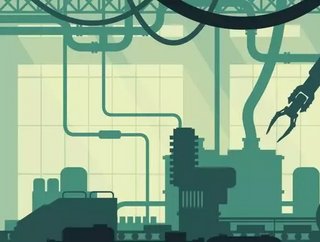Is the UK lagging behind when it comes to industrial robots?

New research conducted by supply chain specialists - Balloon One - takes an in depth look into why the UK is lagging behind when it comes to the use of industrial robots and how its productivity is suffering as a result.
Comparing the UK to others with similar manufacturing outputs
To determine whether there truly is a link between a greater density of robotics and more productivity, Balloon One, looked at nations around the world to see how productive they are and the percentage of their GDP that comes from manufacturing.
When compared to 10 other nations in the graph below, Balloon One found that not only were the UK using fewer robots, they were also lagging behind when it comes to productivity levels.
"Because there is a correlation between robot density and higher levels of productivity, it seems that if the UK increased its robot density, it could boost productivity. This begs the question of whether the country should invest more in automation if it wants to see a boost in its manufacturing productivity. It certainly seems to be working for nations of a similar standing.
"While industrial robots certainly seem to offer a huge productivity boost on a national level, there is also potential for other types of automation to further increase these numbers. A good example of this are the robots found elsewhere in the supply chain, where they work alongside human workers to elevate efficiency. At Balloon One, we've seen first-hand how autonomous mobile robots (AMR) are capable of moving stock between stages of picking and packing by themselves, allowing staff to focus on more complicated tasks or to move onto the next job. There really is potential up and down the supply chain to enhance productivity with robotics,” said Craig Powell, Managing Director at Balloon One.
Other key findings from the research included:
- Those with a density of 200 or more, had an average productivity of GDP US$53.81 per hour worked, with average manufacturing levels being 71% of the GDP
- For those between 150 and 190, the average was GDP US$52.17 per hour worked, and levels of 43% of GDP
- FOr those between 85 and 149, the average was GDP US$44.88 per hours worked, and levels of 86% of GDP
"This analysis shows that countries with a robot density of 150 or more are, on average, experiencing higher productivity levels than those with a robot density of 149 or less. While it could be argued that this is a result of some nations being more focused on manufacturing as part of their economy, and therefore having developed better infrastructure to meet demand, higher levels of productivity aren't skewed towards nations that rely more heavily on manufacturing. In fact, manufacturing levels are, on average, higher (17.86% of GDP) in less-robot-dense nations,” added Powell.
Discover Balloon One’s interactive heat map for robot density.
To find out more, click here.
For more information on manufacturing topics - please take a look at the latest edition of Manufacturing Global.






